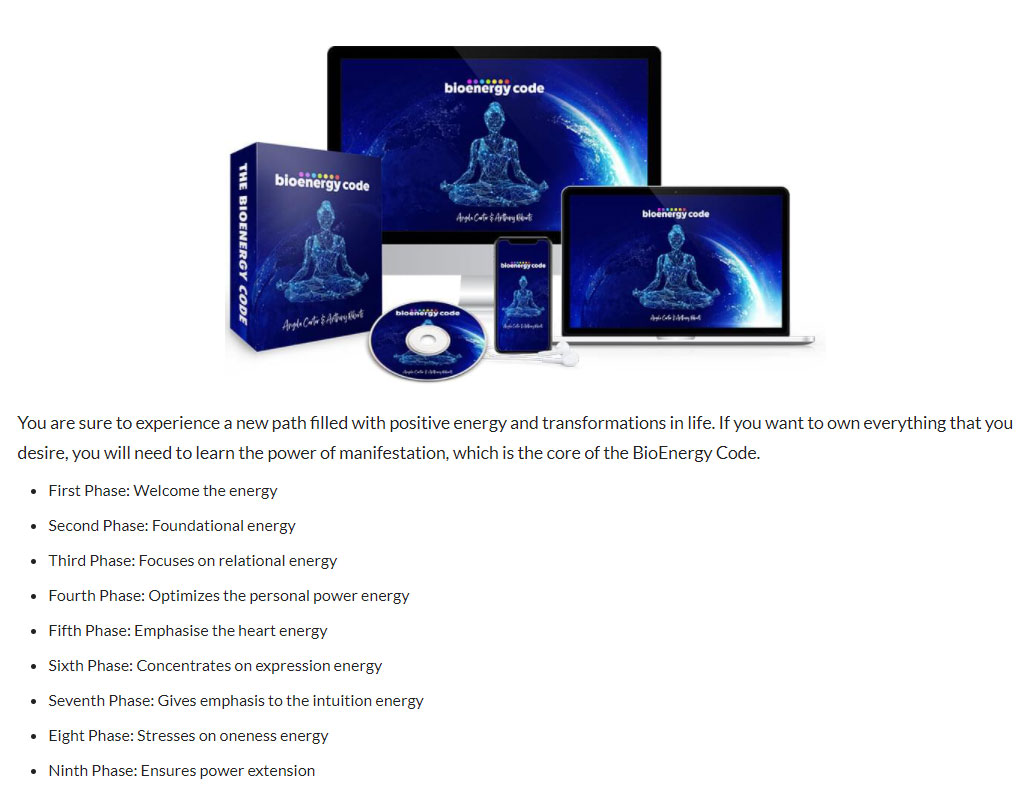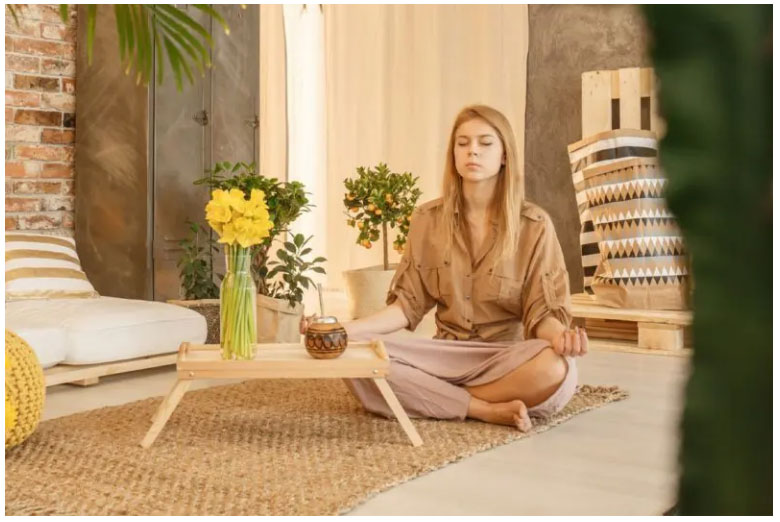How to meditate at home
Meditation is an effective technique that has existed for centuries and can be done at home. People who meditate regularly find that there are both short and long-term benefits. Also today, many people who lead active lifestyles are willing to devote time and energy to meditation because they believe there are health benefits. Some do their daily group sessions, but many others now meditate at home.
What is meditation?
Meditation is an approach to training the mind, just as fitness is an approach to training the body.
Different meditation practices require special mental skills. It is extremely difficult for a beginner to sit for hours and think about nothing. In general, the easiest way to begin meditation is to focus on breathing - an example of one of the most common approaches to meditation: concentration.
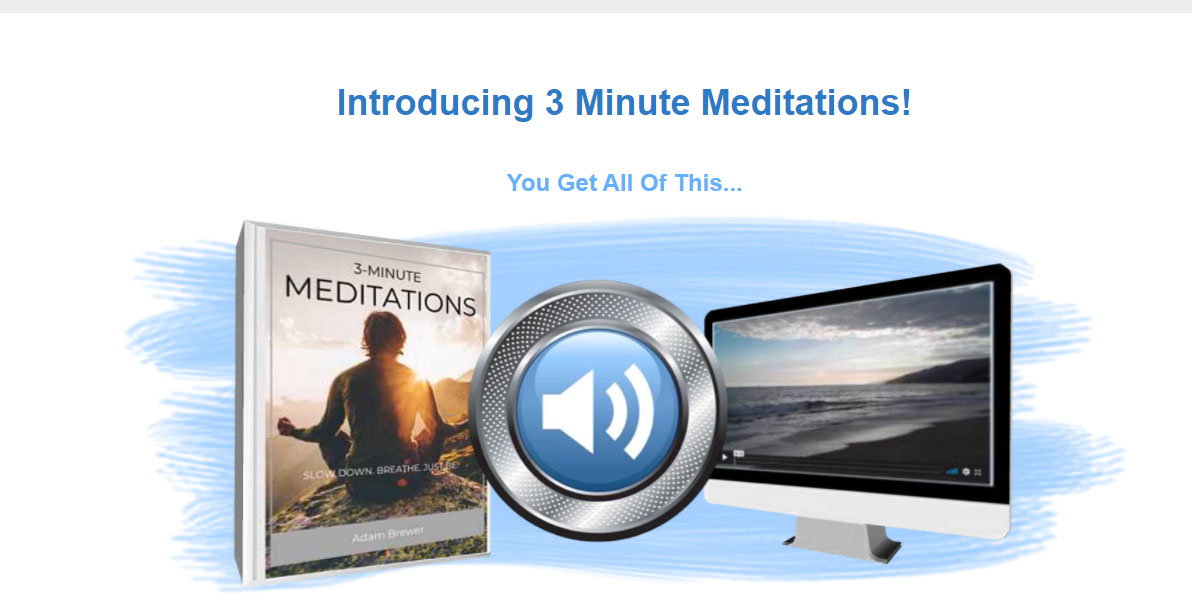
Better concentration
This meditation consists of focusing on a single point. This may involve following the breath, repeating a single word or mantra (a formula made up of one or more syllables repeated in rhythm), staring at the flame of a candle, listening to a repetitive gong or counting beads on a mala (a necklace of 108 beads used by Buddhists and Hindus to meditate). As concentration of the mind is a challenge, a beginner can meditate for only a few minutes and then work on longer periods.
In this form of meditation, it is enough to refocus one's consciousness on the chosen object of attention whenever one notices that one's mind wanders. Rather than pursuing random thoughts, you simply let them go. Through this process, your ability to concentrate improves.
Meditation in mindfulness
Mindfulness meditation encourages the practitioner to observe the wandering thoughts that drift through the mind. The intention is not to get involved in the thoughts or judge them, but simply to be aware of each mental note as it arises.
Through conscious meditation, you can see how your thoughts and feelings tend to move in particular patterns. Over time, you can quickly judge whether an experience is considered good or bad, pleasant or unpleasant. With practice, an inner balance develops.
In some schools of meditation, students practice a combination of focus and attention. Many disciplines involve immobility - to a greater or lesser degree, depending on the teacher.
Other types of meditation
There are various other meditation techniques. For example, a daily practice of meditation among Buddhist monks is directly focused on cultivating compassion. This involves looking at negative events and reformulating them in a positive light. Trungram Gyalwa, a renowned meditation master from the Himalayas, teaches that compassion is a fundamental quality that is ingrained in all of us. Meditation helps us to control negative emotions (such as anger and envy) and to discover positive qualities such as kindness and compassion. Meditation gives us all the tools we need to develop the goodness that already exists within us.
There are also moving meditation techniques such as Tai Chi, Qi Gong and Meditative Walking.
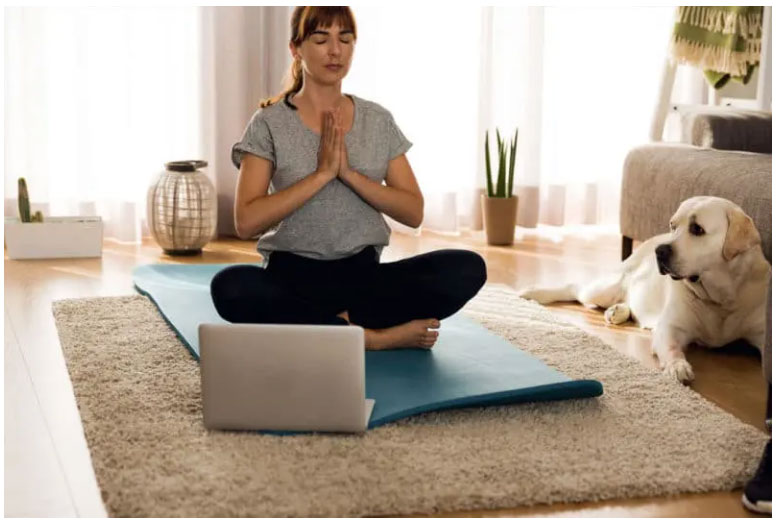
The benefits of meditation at home
If relaxation is not the goal of meditation, it is often the result. The relaxation response, in the words of Dr. Herbert Benson (a researcher at Harvard Medical School), is "an opposite, involuntary response that causes a reduction in the activity of the sympathetic nervous system.
Since then, studies on this involuntary relaxation have documented the following short-term benefits for the nervous system:
• Decrease in blood pressure
• Improvement of traffic flow
• Decreased heart rate
• Less perspiration
• Slowed breathing rate
• Less anxiety and stress
• Decrease in cortisol levels in the blood
• A sense of well-being and deep relaxation
Contemporary researchers are now investigating whether regular practice of meditation brings long-term benefits, noting positive effects on brain and immune function. However, it is worth repeating that the goal of meditation is not to achieve benefits.
In Buddhist philosophy, the ultimate benefit of meditation is the liberation of the mind from attachment to things it cannot control, such as external circumstances or strong internal emotions. The liberated practitioner no longer follows his or her desires unnecessarily or clings to experiences, but instead maintains a calm mind and a sense of inner harmony.
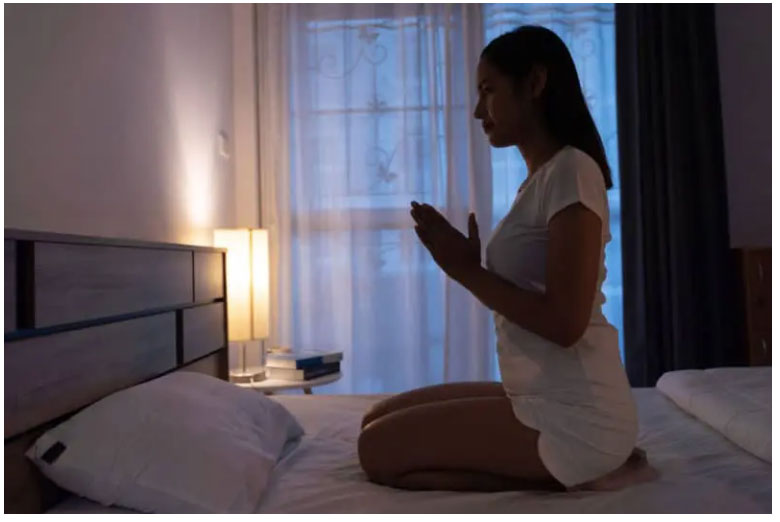
How to meditate?
The first thing to do is to choose a method of meditation that you can look forward to. Although consistency and discipline are necessary for practice, meditation should not be seen as work. With the right method, you will soon be able to find the perfect balance between too rigid and too relaxed.
A few tips to get you started:
What is your motivation?
Do you meditate because you want to manage stress, sleep better or deal with chronic pain? If so, you can use guided meditation, relaxation meditation or chanting. Are you looking for a better understanding of the mind? This is the true goal of mindfulness and attention meditation. Is your primary goal to develop qualities such as patience, empathy and generosity? Gratitude meditation is a good choice (if you can do a gratitude meditation in the morning, it can benefit your whole day). Would you like to deepen your relationship with the divine presence? Spiritual meditation can lead you there.
There are many valuable forms of meditation. It is up to you to choose the one you prefer, the one you find most affordable in terms of practice.
Start small to grow bigger
While learning to meditate at home, it is important to start with small, manageable sessions. Even three minutes will make a difference. It may seem very short, but for some beginners, sitting consciously for a few minutes seems like an eternity. Starting with short sessions also helps you gain the momentum you need to maintain your practice over the long term. As many meditation experts suggest, the quality of your meditation is more important than its duration.
The Right Time
One of the best ways to meditate at home is to find a quiet place away from noisy distractions. Choose a time that is convenient for you. The morning is a good time to meditate because this time of day is usually peaceful and there are few interruptions. It's easy to say that you're going to do a meditation session every day, but then you forget to do it. Instead, plan a reminder for every morning.
The right place
You will also need to find a comfortable position. Although some people like to sit in the lotus position, there are other good options. You can sit on a meditation cushion, a chair or even a couch, as long as you feel comfortable and can sit upright. Do your best to find a position where your spine is aligned.
Relax your neck and shoulders as much as possible while your eyes are half closed or open. Your comfort doesn't matter at first, because you won't stay long. However, it would be good to optimize it for longer sessions. For now, simply sit down in a quiet and comfortable place.
Your sensations
Check how you feel when you first settle into your meditation session. How does your body feel? What is the quality of your mind? Busy? Tired? Anxious?
Developing the right attitude
When you notice that thoughts and feelings arise during meditation, as they often do, look at them with a friendly attitude. Think of them as friends, not intruders or enemies. They are part of you and must be accepted.
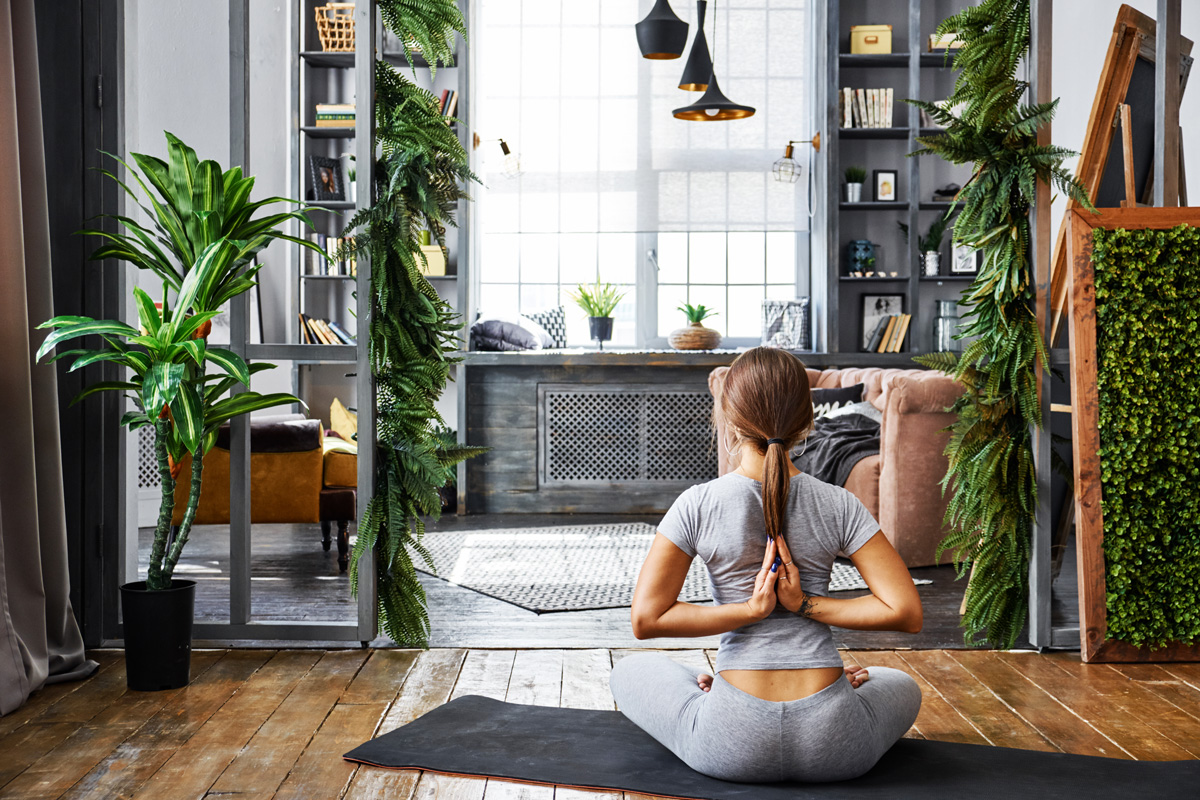
Try guided meditation
Since you are just beginning, guided meditation can add welcome structure to your practice. Many free downloadable applications are available for download over the phone.
Whichever form of meditation you choose, awareness of the present moment is essential. When you meditate, you practice being aware of the meditation object you have chosen. There will be distractions in the form of sounds, smells, feelings of discomfort, tension, itching, etc. In addition, there will be distractions that your mind will produce on its own: lists of things to do, things you should have done or said, things you intend to do or say, emotions, daydreams... the list is endless.
To help the mind stay focused on the present moment, one of the best ways to meditate at home is to focus on the process of breathing. Be especially aware of your breathing as you inhale and exhale. Breathing should become a fixation point for your mind. When these distracting thoughts come to mind, simply acknowledge their presence and begin to focus on the breath again. You can also use physical sensations, sounds, or a visual object as the focus of your meditation. Forget the idea of "emptying the mind. Meditation is about noticing and returning.
A meditation session at home
This home meditation exercise is an excellent introduction to meditation techniques.
Here is a simple example for beginners to do at home:
1. Find a place to sit that feels calm and quiet. 2. Sit in a chair with your feet firmly on the ground or on the floor with your legs crossed or lie down comfortably. Your back should be straight, shoulders and arms relaxed. Just make sure you are stable and in a position where you can stay for a while. 3. Don't make any effort to control your breathing; just breathe naturally. Your breathing will take on a regular rhythm. 4. Close your eyes as soon as you feel comfortable, if you haven't already done so. 5. Focus your attention on breathing and how the body moves with each inhalation and exhalation. Notice the movement of your body as you breathe. Observe (in your mind) your chest, shoulders, rib cage and belly. When your mind starts to wander, focus completely on your breathing. 6. Don't judge or obsess over the content of the thoughts you are lost in. Just come back. 7. When you're ready, gently open your eyes. Take time to enjoy the moment. Notice the sounds of the environment. How are you feeling? (from a body and mind point of view).
Hold this meditation practice for two to three minutes to start, then try it for longer periods.
Conclusion on meditation at home
Meditation is not always easy or even peaceful. But it has some really amazing benefits, and you can start today, and continue for the rest of your life. Do you practice it regularly?
